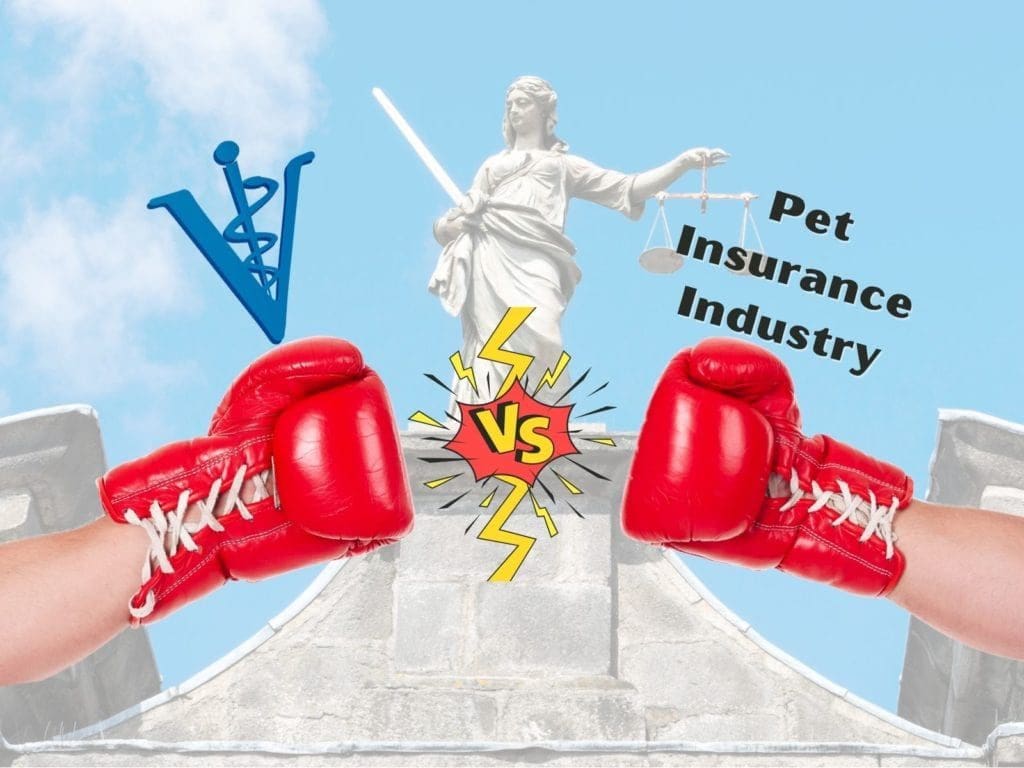Pet insurance and veterinary lobbyists squabble over “pre-existing condition” language in pet insurance law ahead of year’s first meeting
This afternoon, a group of state insurance regulators from across the country will meet online for the first time this year to resume their website’s stated goal: “to complete the development of a model law or guideline to establish appropriate regulatory standards for the pet insurance industry.”
The first item on today’s agenda will be resolving a dispute that has emerged between the group that represents America’s veterinarians, the American Veterinary Medical Association (AVMA), and the North American Pet Health Insurance Association (NAPHIA), the pet insurance industry’s trade group. The disagreement has to do with exactly how “pre-existing condition” is defined in the proposed draft.
Working Group chair hopes to complete its work on the model law draft by end of spring 2021
TCR spoke with task force chair Donald Beatty of Virginia yesterday, who says he’s confident that the group will be able to complete its work sometime this spring.
“That’s going to be the big topic tomorrow,” Beatty said, referring to the pre-existing condition language, adding that the regulators would also be revisiting “open issues” from earlier sections of the draft once they’ve resolved the pre-existing condition question. Beatty and his colleagues were apparently confident enough that the pre-existing condition discussion would move quickly to add two other items to today’s agenda although Beatty made clear that reaching a consensus about the definition of a pre-existing condition would be the top priority.
In a letter posted on the task force website, Kate Jensen, a representative for NAPHIA, wrote:
Though formatted differently, the proposed NAPHIA and AVMA definitions match, except for AVMA’s addition of the term “and contemporaneous with.” NAPHIA’s Veterinary Advisory Team (“VAT”) does not believe that “contemporaneous with” is an appropriate addition to this definition because not all conditions are accompanied by consistently displayed clinical signs. “Contemporaneous with” implies a temporal connection or relationship that does not exist in the presentation of many diseases. For example, chronic conditions like inflammatory bowel disease, skin allergies, and hypoadrenocorticism (Addison’s disease) can have a cyclical, waxing and waning presentation without any veterinary intervention.
Jensen’s argument against the AVMA’s proposed qualifier, “contemporaneous with,” was soon met with a response. Two days ago, the AVMA posted a rebuttal aimed at making sure the definition does not provide too broad an escape hatch for pet insurance companies hoping to invoke the pre-existing condition exception:
‘Contemporaneous’ was added to address the concern that multiple clinical conditions may cause similar clinical signs and that past observation of a non‐specific clinical sign, in and of itself, should not be grounds for denying coverage. For example, an animal that was lethargic at one point in time due to pain from an injury, should not be denied treatment for cancer, cardiac or respiratory disease at a later date because this same clinical sign, lethargy, was exhibited in conjunction with the latter condition. We recognize the North American Pet Health Insurance Association (NAPHIA) has expressed concern about the addition of “contemporaneous with” and shared the issue of waxing and waning clinical signs that may be associated with chronic conditions as the basis for its objection. While clinical signs may wax and wane, they are likely the reason the animal has been presented for evaluation and diagnosis in the first place and, as such, they will be not only ‘related to’ the condition, but also ‘contemporaneous’. If there are no observed clinical signs, but the condition is discovered on routine bloodwork, then that would appear to fall under the “..a veterinarian provided medical advice…” criterion in the proposed definition. We believe it is important to narrow the definition of preexisting condition, as much as possible, to ensure that the clinical sign observed is indeed associated with the preexisting condition to be excluded from coverage. With analogies to how preexisting conditions are handled within human health care, the addition of ‘and [emphasis added] contemporaneous’ appears to achieve a reasonable compromise between a prudent standard1, as applied to the definition of ‘preexisting condition’ in Section 3, and the more restrictive objective standard2 as applied in Section 7.
A more narrow definition of “preexisting condition” inevitably means more risk exposure for the insurance companies. Not unreasonably, the pet insurance companies prefer broader language that gives them considerable freedom to interpret what’s covered and what isn’t. For veterinarians, however, preexisting condition denials represent, not only extra administrative work for them as well as their staff as far as being asked to contact the companies and write on a client’s behalf, but it also comes with the concern that clients will hold them responsible, both for the information in a pet’s record that provides the insurer with the reason for denying a claim as well as for suggesting pet insurance, if that was the case.
“I think that’s pretty much what we’re going to be talking about,” Beatty said, referring to the dueling letters between the AVMA and NAPHIA. “I think there’s only a slight, slight difference in taste in what they want to do, and we’ll see if we can’t get that worked out, or if we can’t, we’ll just have to make a choice,” Beatty added. “The only difference in the language [AVMA] is proposing is ‘contemporaneous with,’” Beatty added, “so we’ll have to see if that can be worked out.”
A Few Words, But High Stakes
However, in an unrelated reporting project now underway, The Canine Review has been acquiring, through public records requests, consumer complaints about pet insurance companies filed with state insurance commissioners as a way to understand the companies better and how they interact with customers. While still in the process of gathering files through records requests, we can report, anecdotally, that a significant portion of claims disputes in the pet insurance industry appear to center around the insurance company’s definition versus the consumer’s understanding of “pre-existing condition.” For insurance companies, this definition is one of the highest stakes issues in the business. For that reason, the differences between the industry definition and AVMA may not be as “slight,” as Beatty put it.
The pet insurance working group (you can download today’s meeting agenda here) is part of the Property and Casualty Insurance Committee within the National Association of Insurance Commissioners (NAIC). The task force of commissioners from 13 states plus the District of Columbia has quietly reached near completion of nine proposed sections in a model draft for a pet health insurance law, first drafted in September 2019 – but not without drawing significant opposition to some aspects of the proposed regulation from the (NAPHIA), the trade association of pet insurers.
The law would require all kinds of insurance providers to make all kinds of disclosures and policy changes that would, in turn, address the kinds of pitfalls our reporting addressed last March.
NAPHIA executive director Kristen Lynch declined to discuss NAPHIA’s goals for 2021, including its key objectives for the model law, but answered by email earlier this week: “It’s a moving target currently, which is why we are reticent to publish anything that may impact our position or jeopardize our ability to work productively with the regulators.”
Nonetheless, NAPHIA has been an active, vocal participant in the model law drafting process, starting with its hiring of lobbyist Kate Jensen a Washington-based lawyer at Steptoe. “Kate represents multiple clients before the National Association of Insurance Commissioners (NAIC),” Jensen’s website says. “She advocates on clients’ behalf as model legislation is considered and advises them on strategic and substantive matters.”
Asked how he personally felt the process had been thus far, Beatty said, “I think it’s been a pretty open discussion. I’ve been very happy that we’ve had veterinarians on the call. I think that’s very helpful.” Asked for a broader timeline, and showing a hint of apprehension, Beatty said, “I’m a ‘one day at a time’ person. I have not projected ahead. I’m just sticking with what’s right in front of me and then I deal with the next project when it comes up.”

